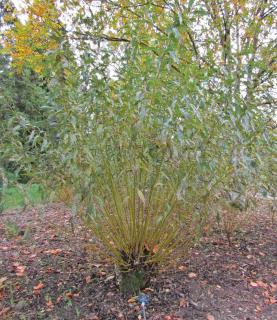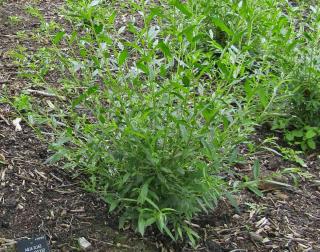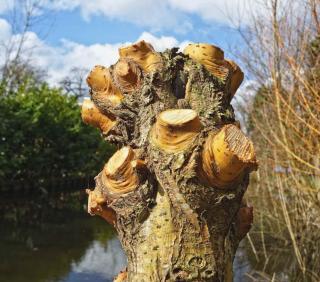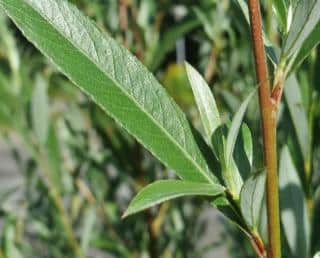

White willow is certainly less famous than its cousin the weeping willow. However, its foliage and silhouette also make it a very interesting option.
Key white willow facts –
Botanical name – Salix alba
Common names – white willow, silver willow, golden willow
Family – Salicaceae
Type – Tree
Foliage – deciduous
Bearing – columnar, wider at the top than at the bottom
Height – 50 to 65 feet (15 to 20 meters)
Breadth – 40 feet (12 m)
Exposure – full sun
Soil – any type
Hardiness – hardy
Growth – fast
Flowering – spring
Salix alba is a willow species that has a rounded, spreading crown. Its foliage is lanceolate and a silvery-gray color. The blooming occurs at the beginning of spring, and leaves unfurl at the same time. The flowers are catkins that are either male or female, both being a greenish yellow color.

White willow isn’t a difficult tree to please. As a matter of fact, it copes well with any type of soil, adapts to any soil pH, and loves full sun.
The only critical factor that matters is soil moisture: the ground must always be moist or wet to some degree.
As is common in the tree and shrub world, the best season to plant white willow is the beginning of fall, if possible, when the weather gets wetter again.
Nonetheless, it’s still perfectly fine to plant in spring, but this isn’t recommended since you’ll have to water a lot more: not good to save on water, and not so great for the environment, either.
 Dig a short trench about 8 to 12 inches deep and wide (20 to 30 cm).
Dig a short trench about 8 to 12 inches deep and wide (20 to 30 cm).To lock moisture in the soil, especially during the summertime, do go ahead and lather a thick layer of plant-based mulch, all around the base of your tree.

Pollarding, shown here, is another way of pruning it: cut branches back every 2 years.
Species and varieties with colorful bark, like the one featured higher in the article, often are brightest when they send out new shoots every year. Prune them like you would dogwoods with colorful bark.

As a general rule, simply sticking a stem with a few leaves in the soil is enough to trigger growth and get a new plant.
White willow can, at times, be overrun by caterpillars and sap-suckers like aphids and scale insects.
As for diseases, fungus are usually the worst offenders: they form necrotic spots.
